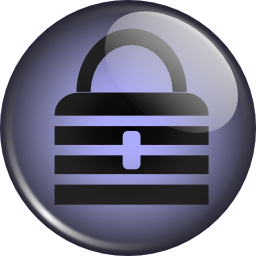Difference between revisions of "Copying your KeePass database"
| (16 intermediate revisions by 2 users not shown) | |||
| Line 1: | Line 1: | ||
[[File:Keepass logo.png|right]] | [[File:Keepass logo.png|right]] | ||
| + | Version: v2, Platform: PC, Mac | ||
==About this article== | ==About this article== | ||
This article provides instructions on how to back up and restore your KeePass password database. It is intended for '''students''' and '''employees''' who use KeePass. | This article provides instructions on how to back up and restore your KeePass password database. It is intended for '''students''' and '''employees''' who use KeePass. | ||
==What's KeePass? Why do I need to back it up?== | ==What's KeePass? Why do I need to back it up?== | ||
| − | KeePass is a password management tool that you install on your laptop. KeePass creates an encrypted database | + | KeePass is a password management tool that you install on your laptop. KeePass creates an encrypted database, in a location that you specified when you installed it, that stores your password information. You want to maintain a backup copy of that database in case your laptop hard drive fails or you need to exchange your laptop for a new one. Losing all of your passwords would be a bad thing and could take many hours to recreate passwords. |
| + | |||
==Backing up your KeePass database== | ==Backing up your KeePass database== | ||
| − | The extension for this database | + | The extension for this database is '''.kdbx''' or older versions used .kdb. Search for any .kdbx or .kdb files on your hard drive. Make a copy and save it to your backup location. |
| + | |||
| + | ==Restoring your KeePass database== | ||
| + | If you should ever have to reinstall KeePass (e.g., on a new laptop), copy your .kdbx file to your new laptop in a folder of your choice. When you open KeePass, you will be prompted for the location of the database. If you have a .kdb file and want to open that database in the new version of KeePass, you will need to Import the database instead of just opening the file. Go to the Database tab at the top of the screen and select Import KeePass 1 database. | ||
| + | |||
| + | ==Pro tips== | ||
| + | *Employees, store your KeePass database to your personal network storage and then specify that location when you install KeePass. You won't ever need to worry about backing it up. The downside is that you will need Internet access and VPN when off campus to open your database. | ||
| + | *Make sure to backup your KeePass database regularly if you are adding passwords and changing password information frequently. | ||
| − | |||
| − | |||
==Related Articles== | ==Related Articles== | ||
| − | *[[Receiving your laptop | + | *[[Receiving your laptop]] |
| − | *[[ | + | *[[PC laptop backup]] |
| + | *[[Mac laptop backup]] | ||
| − | [[Category: ]] | + | [[Category:PC]][[Category:Laptop Exchange]][[Category:Backup]] |
__NOTOC__ | __NOTOC__ | ||
Revision as of 20:41, 19 April 2018
Version: v2, Platform: PC, Mac
About this article
This article provides instructions on how to back up and restore your KeePass password database. It is intended for students and employees who use KeePass.
What's KeePass? Why do I need to back it up?
KeePass is a password management tool that you install on your laptop. KeePass creates an encrypted database, in a location that you specified when you installed it, that stores your password information. You want to maintain a backup copy of that database in case your laptop hard drive fails or you need to exchange your laptop for a new one. Losing all of your passwords would be a bad thing and could take many hours to recreate passwords.
Backing up your KeePass database
The extension for this database is .kdbx or older versions used .kdb. Search for any .kdbx or .kdb files on your hard drive. Make a copy and save it to your backup location.
Restoring your KeePass database
If you should ever have to reinstall KeePass (e.g., on a new laptop), copy your .kdbx file to your new laptop in a folder of your choice. When you open KeePass, you will be prompted for the location of the database. If you have a .kdb file and want to open that database in the new version of KeePass, you will need to Import the database instead of just opening the file. Go to the Database tab at the top of the screen and select Import KeePass 1 database.
Pro tips
- Employees, store your KeePass database to your personal network storage and then specify that location when you install KeePass. You won't ever need to worry about backing it up. The downside is that you will need Internet access and VPN when off campus to open your database.
- Make sure to backup your KeePass database regularly if you are adding passwords and changing password information frequently.
